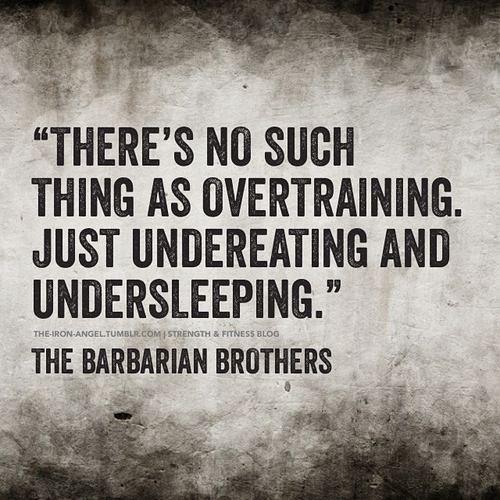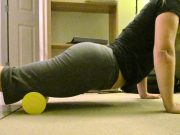In today’s fast-paced world, maintaining a consistent fitness routine is often seen as a cornerstone of a healthy lifestyle. However, the pressure to push harder and achieve more can sometimes lead us down the slippery slope of burnout, leaving us physically and mentally exhausted. If you’ve ever felt overwhelmed or unmotivated despite your best intentions, you’re not alone. Understanding how to balance dedication with self-care is crucial to sustaining both your enthusiasm and your well-being. In this article, we will explore practical strategies to help you navigate the fine line between commitment and overexertion, ensuring that your fitness journey remains a source of joy and rejuvenation rather than a burden. Let’s embark on this path together, with compassion and mindfulness guiding the way.
Recognize the Signs of Overtraining and Listen to Your Body
Overtraining is a common pitfall for fitness enthusiasts, and it’s crucial to stay attuned to the signals your body sends. Fatigue, persistent soreness, and decreased performance are tell-tale signs that you’re pushing too hard. Listen to your body’s whispers before they turn into screams of injury. By recognizing these signs early, you can adjust your routine to prevent burnout and maintain a healthy relationship with exercise.
- Unexplained mood swings: Feeling unusually irritable or depressed could indicate that your body needs a break.
- Sleep disturbances: Struggling to fall asleep or waking up frequently can be a sign that your body is overworked.
- Loss of motivation: If the thought of hitting the gym feels more like a chore than a joy, it might be time to reassess your training load.
Adjusting your fitness routine doesn’t mean you have to abandon your goals. Consider implementing a deload week or incorporating more active recovery activities like yoga or swimming. Here’s a quick comparison of signs to watch for and suggested actions:
| Signs of Overtraining | Suggested Actions |
|---|---|
| Constant fatigue | Increase rest days |
| Decreased performance | Lower workout intensity |
| Persistent soreness | Focus on recovery exercises |
By keeping an eye on these indicators and being proactive in your approach, you can sustain a balanced and effective fitness regimen that supports your well-being.

Create a Balanced Routine with Variety and Rest Days
To maintain a sustainable fitness routine, it’s essential to incorporate a variety of exercises and schedule rest days. This not only helps in preventing physical burnout but also keeps your mind engaged and motivated. Here’s how you can balance your routine:
- Mix Up Your Workouts: Alternate between different types of exercises such as cardio, strength training, flexibility, and balance. This not only targets various muscle groups but also keeps your routine exciting. Consider the following combinations:
- Monday: HIIT or cardio session
- Tuesday: Strength training with weights
- Wednesday: Yoga or Pilates
- Thursday: Rest day
- Friday: Dance or aerobics
- Saturday: Outdoor activities like hiking or cycling
- Sunday: Rest day or light stretching
- Listen to Your Body: Pay attention to signs of fatigue or overtraining. If you feel unusually tired, it might be a cue to take an additional rest day or switch to a less intense activity.
| Day | Activity | Intensity |
|---|---|---|
| Monday | Cardio | High |
| Wednesday | Yoga | Low |
| Friday | Aerobics | Medium |
| Sunday | Rest or Light Stretching | Low |
Including rest days is crucial for recovery and muscle growth. Rest days allow your body to repair and strengthen itself, reducing the risk of injury. Consider incorporating active recovery on these days, such as gentle walks or stretching, to maintain movement without overexertion.

Set Realistic Goals and Celebrate Small Achievements
Embarking on a fitness journey is as much about mental endurance as it is about physical strength. Setting realistic goals is crucial in ensuring that your path is sustainable and fulfilling. Instead of aiming to run a marathon in a month or lose a significant amount of weight overnight, break down your ambitions into smaller, more achievable targets. This not only makes your objectives more manageable but also allows you to enjoy the process without overwhelming yourself.
Celebrate your progress, no matter how minor it may seem. Each step forward is a victory worth acknowledging. Here are some ideas for celebrating those small wins:
- Treat yourself to a relaxing spa day after sticking to your workout plan for a month.
- Buy a new piece of workout gear to mark a new personal best in your exercises.
- Enjoy a favorite healthy meal after reaching a weekly milestone.
To keep track of your achievements and stay motivated, consider creating a simple progress table:
| Goal | Target Date | Achieved |
|---|---|---|
| Run 5K | April 30 | Yes |
| Lose 5 lbs | May 15 | In Progress |
| Attend Yoga Class | Weekly | Yes |
By aligning your goals with your lifestyle and celebrating each success, you create a positive feedback loop that keeps burnout at bay and makes your fitness routine a rewarding part of your life.

Incorporate Mindfulness and Stress-Relief Practices into Your Workouts
In today’s fast-paced world, blending mindfulness and stress-relief techniques with your workouts can be a game-changer for both mental and physical well-being. Consider the following practices to enhance your fitness routine:
- Breath Awareness: Focus on your breathing during exercises. This can help maintain a steady pace and reduce anxiety. Inhale deeply through the nose and exhale through the mouth, syncing your breath with your movements.
- Body Scanning: As you workout, periodically pause to mentally scan your body from head to toe. Notice any tension and consciously relax those areas, helping to prevent injury and promote relaxation.
- Gratitude Reflection: At the end of your workout, take a moment to reflect on what your body has achieved. Acknowledge your efforts and express gratitude for the strength and resilience you possess.
Integrating these practices into your routine not only reduces stress but also fosters a deeper connection with your body, promoting a sustainable approach to fitness. Below is a simple comparison of benefits when incorporating mindfulness into workouts:
| Traditional Workout | Mindful Workout |
|---|---|
| Focused on physical goals | Balances physical and mental well-being |
| Can lead to burnout | Reduces stress and prevents burnout |
| Often rushed and routine | Encourages presence and enjoyment |








































